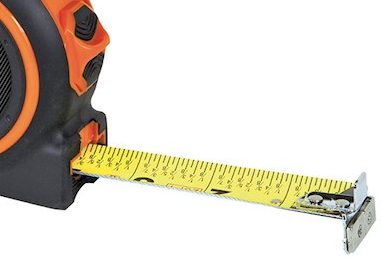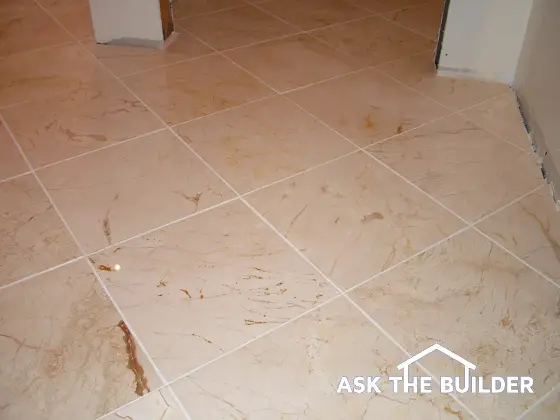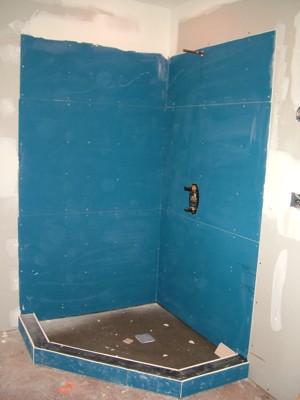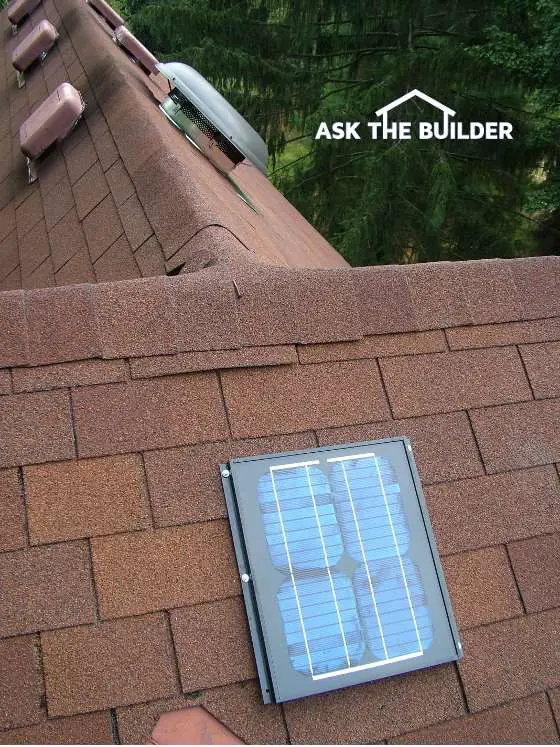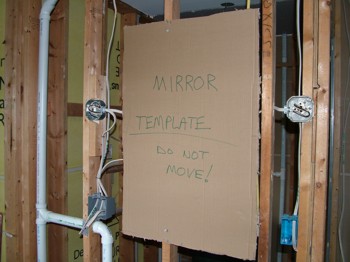What’s in This Issue?
Very Important News
Nail-Gun Safety
Mortar Gun
Drywall Finishing
Sanding Drywall
Spray Painting
Birthday Golf
Stain Solver Sale
Friendly Question Reminder!
If you have a question for me, don't hit the Reply button just yet. Go immediately to my web site and type in the keywords about your problem into my Search engine. The search box is at the top of every page of my web site. You could have your answer in seconds if you do this! Please pay attention to all links you see at my web site. The exact products and services you often need are right in front of you, and you might be ignoring them.
Never forget that all past issues of my Newsletters can be found at my website.
VERY IMPORTANT NEWS
If you want to keep getting my newsletter, you MUST add me to your Address Book or you Contact List in your email program or interface. This is really important if you use Yahoo!, Gmail, Hotmail, AOL, etc. If you don't add me, this newsletter might start to get automatically filtered OUT of your Inbox.
Here's what's happening. Because of the flood of Spam, these web-based email programs, as well as some proprietary software like Thunderbird, Eudora, etc. are segregating incoming mail based upon your Address Book. It's giving high priority to those emails from people you've indicated you like or added to your Address Book. You typically have friends in your Address Book or Contact list. That makes perfect sense!!
Please add: [email protected] to your Address Book right now. Thanks in advance.
- - -
Let's see, what's been happening over the past two weeks? Well, I've been working non-stop on my bathroom remodel and have rounded third and am heading for home plate. I should be finished by the next newsletter. I went to the hospital to get treated for shooting myself with my nail gun, I started the probate process for my Mom's estate (I'm the executor) and I had a birthday! Whew, that's a bunch of things in a few days!
Nail-Gun Safety
The accident with the nail gun happened this past weekend. It was totally my fault because I was in a rush. That's the takeaway you need to focus on. Slow down and THINK before activating any power tool.
I have several Paslode nail guns. One shoots a tiny 18-gauge finish nail that's perfect for pining small pieces of wood trim. I have another Paslode tool that shoots 2-inch-long 16-gauge finish nails. The trouble is both guns look nearly identical - same color and pretty much the same shape.
While building several window and door head casings for the bathroom, I needed both guns. This special trim board is made up of five different pieces of trim lumber and sits on top of two vertical pieces of window casing. The look is very Victorian. I use the long nails to attach a special crown molding to the top of a flat head board. The other nail gun is used to attach the corner pieces of trim and a long flat molding to the bottom of the head casing.
Well, I needed to glue and nail the tiny mitered corner pieces using the smaller nails that are only 1 and 1/4-inch long. To hold the triangular pieces of wood, I have to use my left hand while precisely positioning and firing the nail gun. Because I was in a hurry, I grabbed the wrong nail gun and fired it. Yeouuuuch! A long nail shot out the top of the wood and into my wrist at the base of my palm. It penetrated about 1 inch into my wrist. The physician's assistant who treated me told me the nail missed the radial nerve that connects to the thumb and index finger by 1/8 inch and the artery by about 1/4 inch. I was lucky.
Please be very careful when working with power tools.
Mortar Gun
I just took delivery of a very cool tool I'll be testing. But I wanted to let you know ahead of time in case you have to repoint the brick or stone on your home. This tool allows you to install mortar much like a caulk gun. I'll tell you more about it in the next few weeks. It really looks like an amazing tool.
Drywall Finishing
I hate to finish drywall. I can get professional results with ease, but I HATE doing it. It's mind-numbing work. I was taught how to do drywall finishing by several professionals who have worked over the years on my projects. It really has paid off to listen to them. I show many of the techniques in the Drywall Videos at my website.
Here's a trick that many homeowners don't know. When second coating the corners or even the flat seams, you really need to use compound that's been well mixed and has had a little water added to it. Be sure to read the label on the joint compound to see how much water you can safely add without degrading the adhesive qualities of the mud.
But suffice it to say the compound needs to be the consistency of warm cake icing. Not runny, but smooth and creamy. You'd be surprised how many homeowners I see who use the compound right out of the plastic buckets without adding water. They struggle spreading the mixture and it looks really rough. Be careful not to mix air into the compound. You'll get tiny bubbles in the mix that will have you pulling your hair out.
One final tip. If you have a room or two of drywall to finish, buy the joint compound in the boxes instead of the plastic buckets. It's cheaper and helps the planet as the plastic buckets are made with crude oil. You dump the box of mud into a 5-gallon bucket and away you go! This is why I always save the plastic buckets and lids as I know I'll use them in the future.
Sanding Drywall
I loathe sanding drywall. There's an abundance of products out there to make the task less messy, but drywall dust is just a menace. One of the tricks I was taught years ago by the pros was to use these handy sanding sponges in the corners where a wall corner meets the ceiling. A standard pole sander works great on the wide-open areas of a corner either where two wall meet or a wall meets a ceiling, but they are next to useless where two walls meet up at the ceiling. The pole sander just bumps into the wall or ceiling and can't do the job.
This is where the handy sanding sponges shine. I used these for this job and was pretty happy. They work best when you get the ones that have the abrasive material on four of the six surfaces of the sponge.
Spray Painting
As I'm getting my house in Ohio ready to sell, Kathy wants to dress up the return-air registers in the house. I was able to get gorgeous Victorian cast-aluminum grilles, but they needed to be painted. I tried using a brush, but that was futile.
Then I remembered I had a spray-paint tool that was sent to me to review. Wow!! This tool was easy to set up, worked like a champ and was easy to clean. There was minimal overspray, so all in all it was a great success. If you need to apply paint to hard-to-paint items, this should be on your radar. I'm going to try it next week to apply paint to the custom four-panel Victorian doors in the master bedroom. It should save me nearly an hour's time, if not more.
Birthday Golf with John Meredith and Jason
Here at the Carter house, it's a tradition that on your birthday you get to do whatever you want - assuming it's legal - without any questions or hassle from the other members of the family. For me, that means going out and playing a round of golf.
The past few years, I've done that with my very good friend John Meredith. This year, his son-in-law Jason helped us regrade and re-landscape the golf course. On hole number nine, I pushed over a dead tree that was blocking my chip shot to the green. John and Jason howled with laughter. We play at the Buck Point Golf facility on the shore of Lake Brookville in Indiana. This course is a little rough around the edges, but it has a great layout and some very tough holes. I shot a 103. It was my fourth time out this year, and I'm still perfecting the sweet swing my golf coach Joel Suggs taught me back in January.
Anyway, after the golf game was finished, we had lunch. John is the owner and president of Saver Systems. His company makes fantastic sealers for masonry and wood. John brought to the table some secret photographs and an actual test sample of wood that had undergone extensive ultraviolet (UV) light testing. The photos showed samples of national brands of deck stain and his new blend tested side-by-side. Next week I'll share these photos with you, but suffice it to say that you'll NOT BELIEVE what you'll see.
John has been working on discovering the perfect recipe of his synthetic resin deck sealer and a nano-technology light-stabilizing chemical. It appears his chemist Gregg has hit the sweet spot because the actual sample and the photos showed little or no damage to the deck stain by the UV light. The color was as rich as if it had just been applied after hundreds and hundreds of hours of harsh UV exposure.
Here's the bottom line. Next week, John has told me he will do a pre-production batch of this deck stain for just you. That's right, no one else in the world but MY subscribers will have access to this deck sealer until next spring. He's only going to make 3,000 gallons and will limit sales of this to just ten gallons maximum to each person. And I can't believe this, but John said free shipping to all AsktheBuilder subscribers for this promotion! If your deck needs to be sealed before winter, this is the product to use. I plan to use some on my own front porch if I can get some.
I'll have the secret link to this deal in the next issue of the newsletter. I sure hope you are one of the lucky ones to get this product now instead of having to wait until next spring.
Last issue I promised you a huge Stain Solver sale to see if we could break the new mixer in the warehouse. Now's your chance. This promotion is a great tie in if you intend to try to be one of the folks who'll get John's amazing stain next week. My Stain Solver is the ultimate safe deck cleaner!!
It also works to clean anything, yes anything, that's water washable in and around your home.
This sale will only last seven days. The clock is already ticking on the promo code. It WILL expire, of that you can be quite certain.
The promo code is: 25sale Remember, lower case!! (Sale ended on August 11, 2009.)
Go to Stain Solver.
You enter the promo code on the next page AFTER you add an item to the shopping cart. You'll get your best buy if you use it on a 16 or 50-pound size. Don't forget that the promo code works on all items in the cart, so now is the time to use it for anything you need.
AsktheBuilder.com
